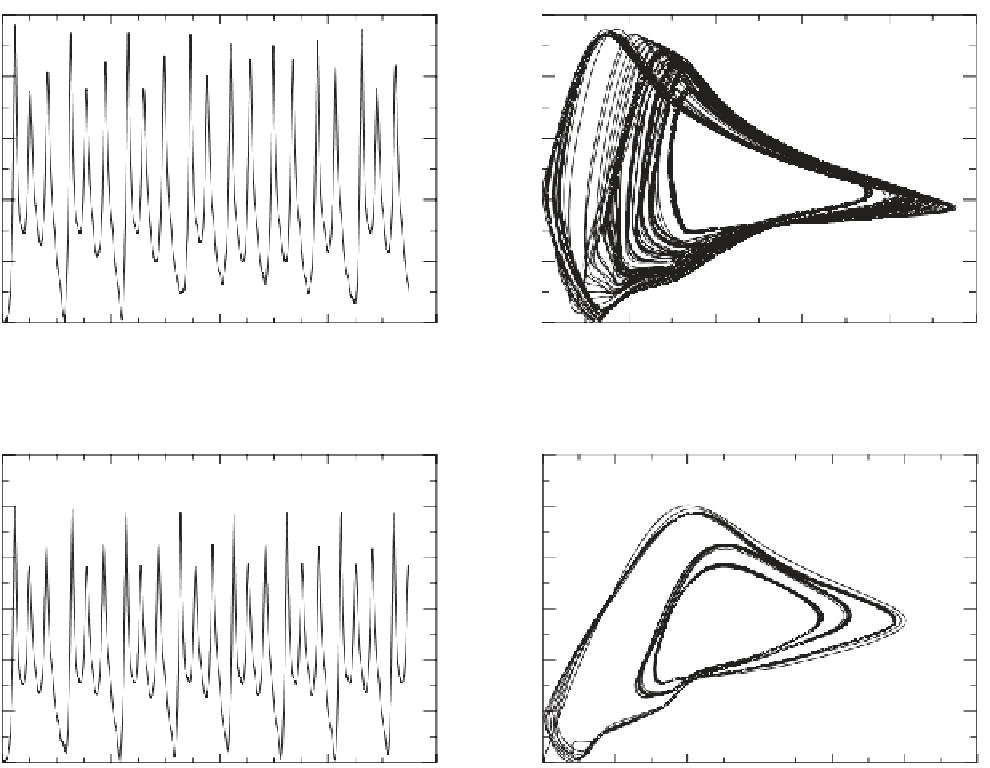Geoscience Reference
In-Depth Information
(a)
(b)
0.5
0.5
0.4
0.4
0.3
0.3
0.2
0.2
0.1
0.1
0.0
0
0.0
0.0
2000
4000
6000
8000
0.1
0.2
0.3
0.4
0.5
Time (s)
T
M
=2
(
t
) (K)
(c)
(d)
0.6
0.6
0.5
0.5
0.4
0.4
0.3
0.3
0.2
0.2
0.1
0.1
0.0
0
0.0
2000
4000
6000
8000
0.0
0.1
0.2
0.3
0.4
0.5
0.6
Time (s)
T
M
=2
(
t
) (K)
Figure 1.11.
Temperature
m
= 2 amplitude time series [(a) and ( c)] and delay coordinate reconstructions [(b) and (d)] in the
m
=2AV-
d
period-doubled amplitude vacillation regime, obtained by
Young and Read
[2008] in Boussinesq Navier-Stokes
simulations of rotating annulus flows.
τ
= 100 s in (b) and
τ
= 85 s in (d). Adapted from
Young and Read
[2008]. Copyright 2008,
with permission from Elsevier.
Such a sequence is strongly reminiscent of the period-
doubling route to chaos found in the two-layer experi-
ments of
Hart
[1985, 1986], who showed sequences of
period doublings from an
m
= 1AV flow at fixed Froude
number. This would therefore appear to be a generic route
to chaos in baroclinic wave flows at low enough wave
numbers that sideband instabilities do not dominate the
dynamics, and the main nonlinear interaction is between
a single wave and the zonal flow.
This kind of bifurcation sequence has also been
obtained in various studies invoking weakly nonlinear
baroclinic instability theory, such as by
Pedlosky and
Frenzen
[1980] for the two-layer model [see
Klein
, 1990, for
a review] and
Weng et al.
[1986] for the continuously strat-
ified Eady problem. These and other studies [e.g, see
Ghil
and Childress
, 1987] have shown that the endpoint of such
period-doubling sequences, even in very simple models
representing the interactions of single mixed baroclinic-
barotropic waves with a zonal flow, can be chaotic states
of low dimension. In certain limits, several workers have
shown that the single wave/zonal flow equilibration prob-
lem may reduce to a set of three coupled ODEs:
dX
dτ
=
σ(Y
−
X)
,
(1.15)
dY
dτ
=
XZ
+
r
a
X
−
Y
,
(1.16)
dZ
dτ
=
XY
−
bZ
,
(1.17)


















